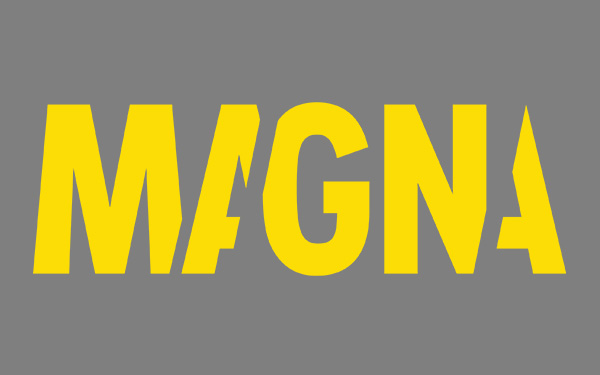India's ad revenues to grow at +12.6% CAGR: Magna forecast
By M4G Bureau - July 27, 2017
OOH will grow at +12% in 2017. Technology integration will increase effectiveness and help DOOH to drive ad spends.

India is recovering from the aftereffects of demonetisation introduced in Q4 2016 and the currency deficit faced during this period has helped the country leap frog towards a lesser cash economy. The country is set to move towards a uniform tax regime with Goods & Services Tax (GST), effective July 2017. While this fuels growth it is likely to create a fleeting disruption in the short term when the industry realigns and adapts to the new tax structure. GDP in real terms is estimated to grow +7.2% in 2017 compared to +6.8% in 2016, according to International Monetary Fund (IMF). Within the next decade India will gallop to become one of the largest consumer markets in the world. Rising affluence, ease of doing business, urbanisation and enabling infrastructure will contribute to this status.
Advertising revenue which accounts for 0.38% of GDP is likely to grow at a CAGR of +12.6% to touch Rs 992bn by 2021. Within advertising, offline is estimated to grow at a CAGR of +9.7%, while digital will grow at +25.5% CAGR in the next 5 years. Mobile is projected to overtake desktop by 2020. Television will still be the largest media in 2021 with a market share of 39%.
In 2017, Adex is estimated to grow +11.5% to touch Rs 611bn, predicts Magna, the intelligence, investment and innovation strategies agency of IPG Mediabrands. Ad spends will be driven by sectors like social, fin-tech, and payment banks, telecom service, content distribution platforms etc., in addition to FMCG, auto and Ecommerce.
OOH will grow at +12% in 2017. Technology integration will increase effectiveness and help DOOH to drive ad spends. Urbanisation in the form of new Metro lines and smart cities, modernisation of Indian Railways and their new advertising policy, etc., will provide opportunities for a planned development of quality assets and also push the industry to innovate and move beyond billboards. Regional cinema is pushing boundaries to outdo Bollywood cinema which augurs well for the industry.
Table: Media owner revenue by category in INR Cr Net
|
Media Category |
2012 |
2013 |
2014 |
2015 |
2016 |
|
Television |
14092 |
14932 |
16902 |
20080 |
22221 |
|
|
14601 |
15428 |
17032 |
18391 |
19523 |
|
Digital |
2355 |
3157 |
4359 |
5991 |
7990 |
|
OOH |
2028 |
2257 |
2534 |
2842 |
3158 |
|
Radio |
1272 |
1374 |
1539 |
1773 |
1971 |
|
Total |
34347 |
37148 |
42365 |
49077 |
54864 |
|
|
|
|
|
|
|
|
Media Category |
2017 |
2018 |
2019 |
2020 |
2021 |
|
Television |
24516 |
27416 |
31062 |
34774 |
39012 |
|
|
20644 |
21916 |
23348 |
24696 |
25884 |
|
Digital |
10227 |
12973 |
16538 |
20394 |
24868 |
|
OOH |
3552 |
3979 |
4530 |
5074 |
5642 |
|
Radio |
2227 |
2539 |
2920 |
3329 |
3762 |
|
Total |
61166 |
68822 |
78398 |
88266 |
99167 |
Global Outlook
- Globally, media owners advertising revenues are projected to grow by +3.7% in 2017, to $504 billion. This is in line with MAGNA’s previous forecast (December 5, 2016). This is a noticeable drop compared to 2016 which displayed a record +5.9% growth rate.
- This slowdown was expected by MAGNA as cyclical global sports events and U.S. elections contributed approximately one point to 2016 global growth. Excluding the impact of cyclical events in both years, the underlying slowdown in 2017 will actually be minimal: +4.7% in 2017 vs +4.9% in 2016.
- Global advertising growth is expected to re-accelerate to +4.5% in 2018, with the return of even-year events (Football World Cup in Russia, Mid-Term U.S. elections, Winter Olympics in South Korea).
- 67 of the 70 markets analysed by MAGNA will experience some level of growth this year. Within the top 20 markets, highest growth rates are expected in China and Spain (both +7%), India (+12%) and Russia (10%).
- The fastest-growing region this year will be Central & Eastern Europe (+7.2%), ahead of Latin America (+5.9%) and APAC (+5.6%). The slowdown vs 2016 is mostly concentrated in North America (+1.7% vs 7% last year) and Western Europe (2.8% vs 4% last year).
- After a positive performance in 2016 (+3.3%) linear television advertising sales will decrease this year by almost -1% due to the lack of sports events and the erosion of viewing and ratings, despite CPM inflation.
- Online advertising sales will grow by 14% this year while offline ad sales (television, print, radio, out-of-home) will decrease by -2% (last year was flat). Online advertising will pass the $200 billion mark ($204 billion) to become the #1 category globally, with 40% of total ad sales vs 36% for television.
- Within digital, the majority of advertising sales (54%) is now generated by impressions and clicks on mobile devices. Mobile advertising will be passing the $100 billion mark for the first time this year ($110bn).
- Video and social formats will continue to drive digital advertising growth (+30% or more) while paid search will grow double digit again (+13%) to remain the #1 format (almost half of digital ad sales).
- In the U.S., media owners advertising sales will grow by +1.6% this year to reach $185 billion. This is a significant slowdown compared to the record growth recorded last year (almost 8%). Neutralizing the effect of the even-year events in 2016 and 2017, however, 2017 growth will be +3.4% compared to +5.9% last year.
According to Vincent Létang, EVP, Global Market Intelligence at MAGNA and author of the report: “The record level of growth in 2016 globally, outperforming economic growth, was caused by marketers willing to embrace the new opportunities offered by digital media (search, social, video, programmatic) on a larger scale, while anxious to preserve their share of voice on traditional linear television, despite rising CPMs costs. In 2017, both digital and offline growth will slow down. Online advertising sales will nevertheless continue to grow by double-digits in most markets (globally +13%), but television ad sales will decline (-1%) due to softer price increases, ratings erosion and the lack of global sports events.”

Stay on top of OOH media trends







